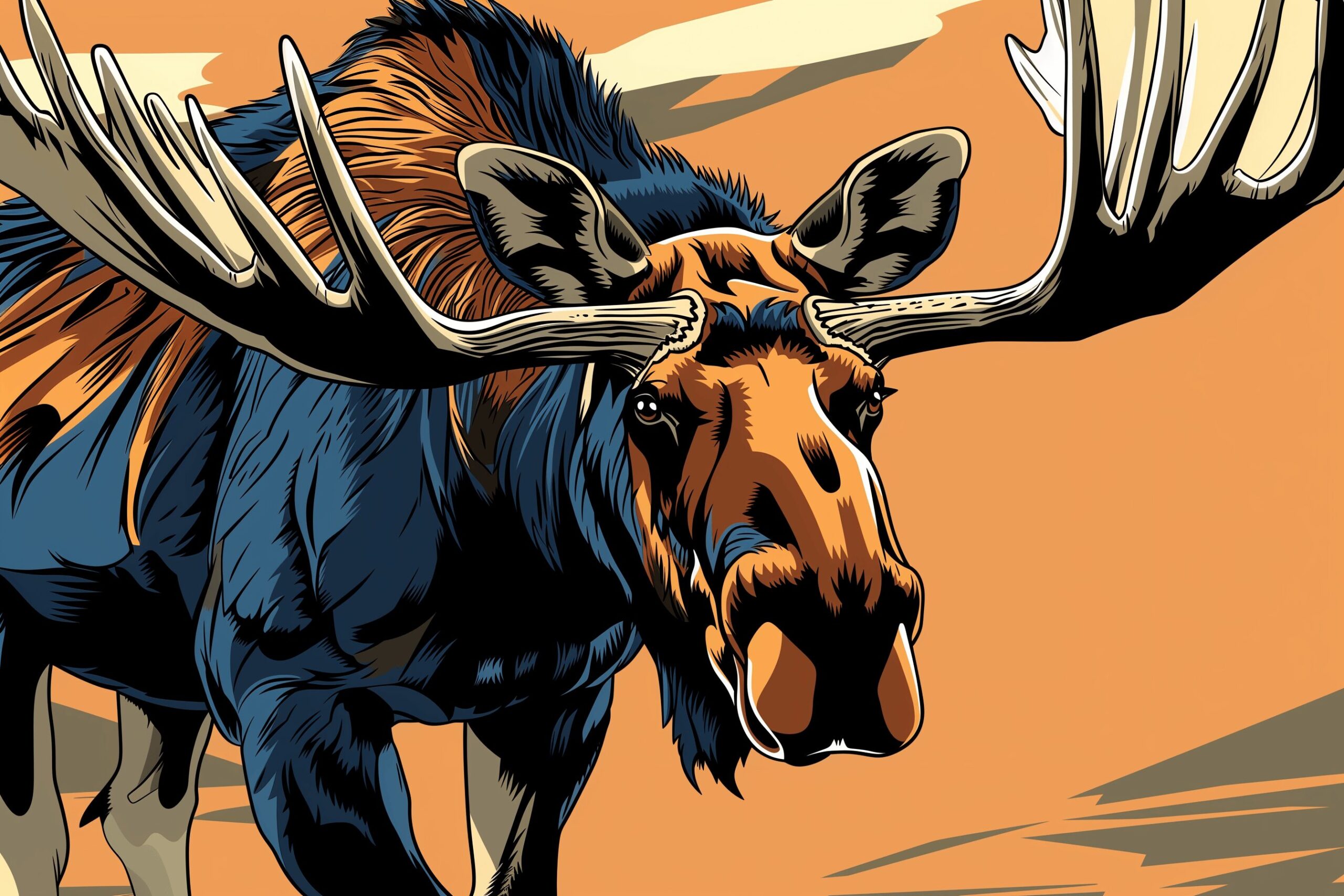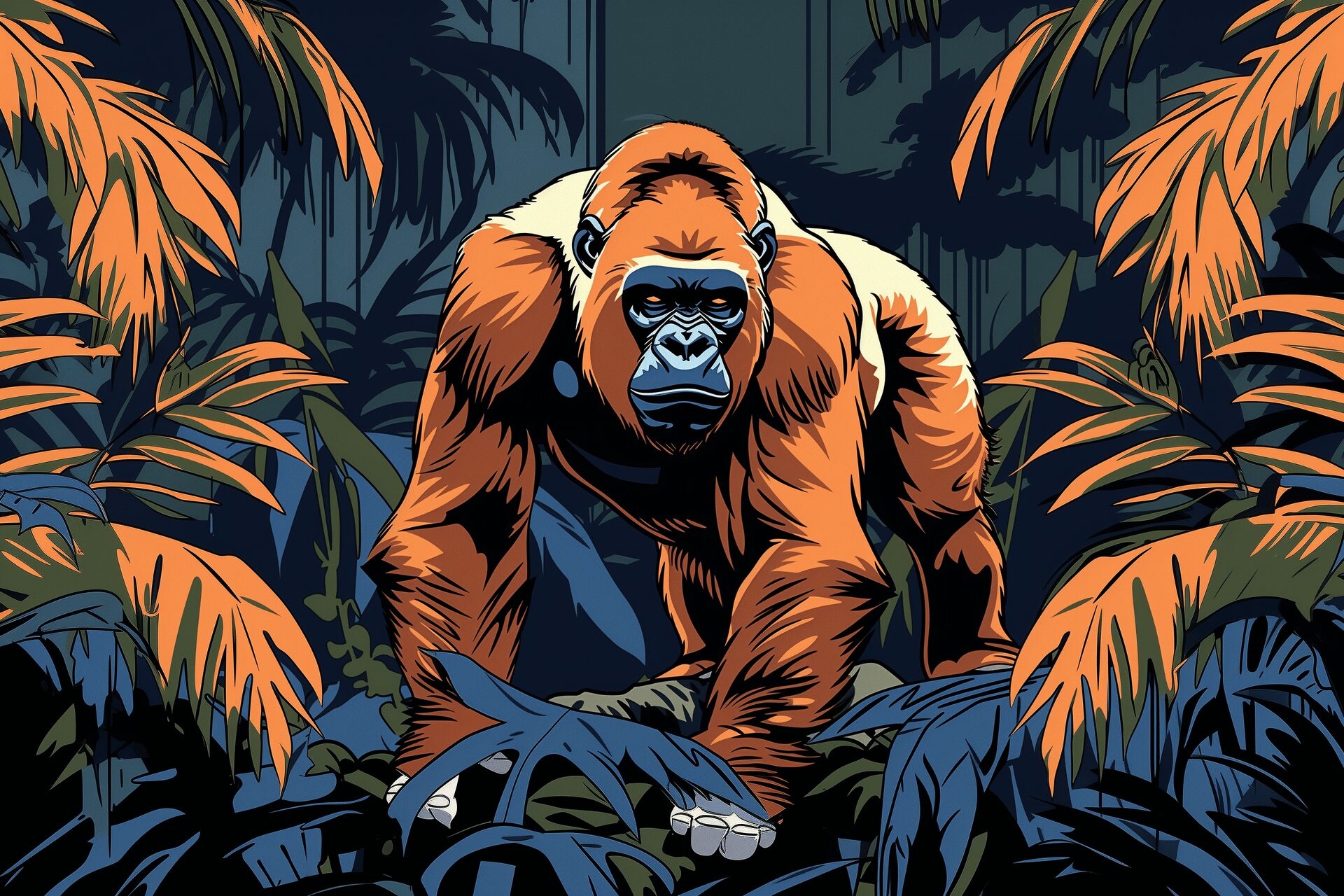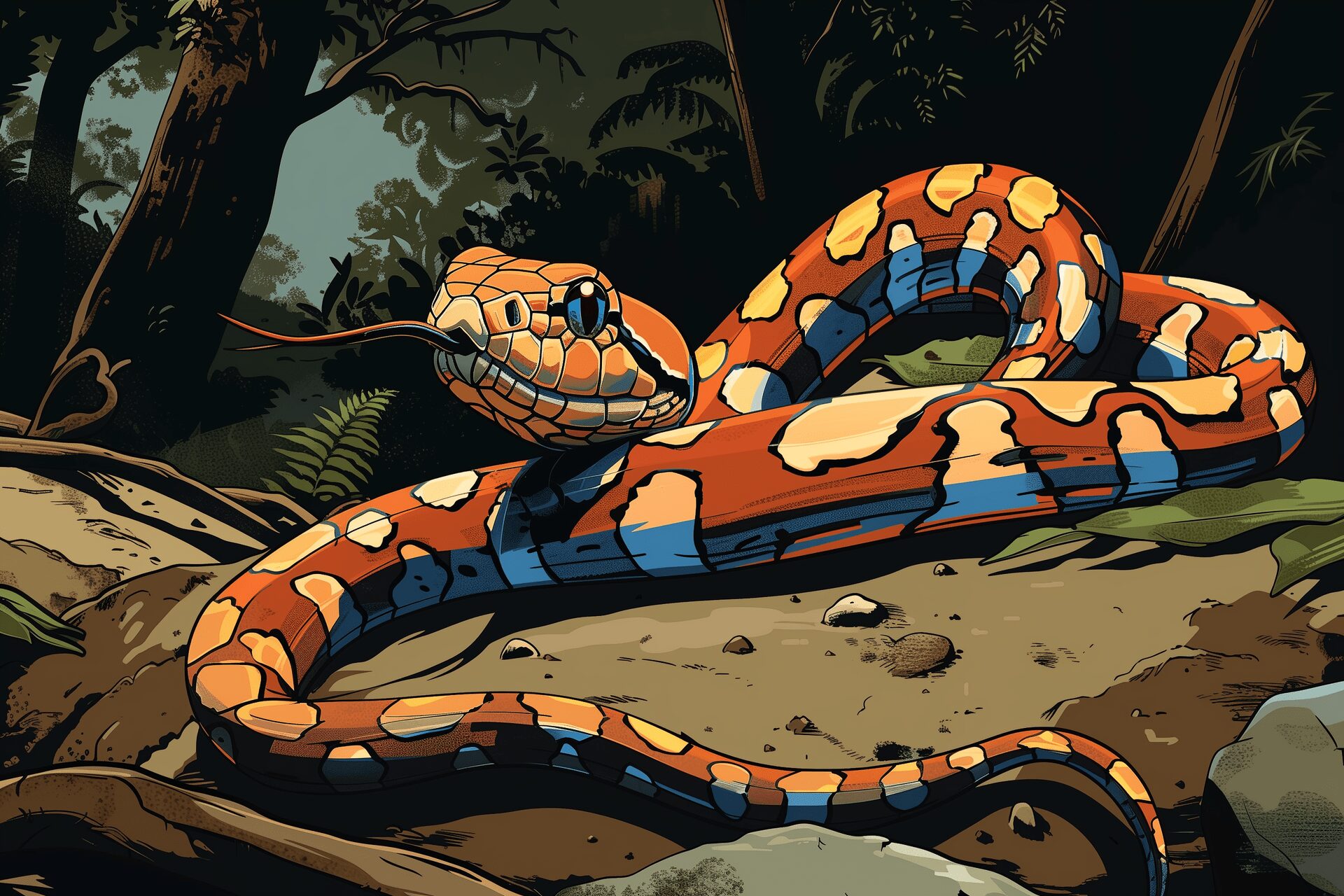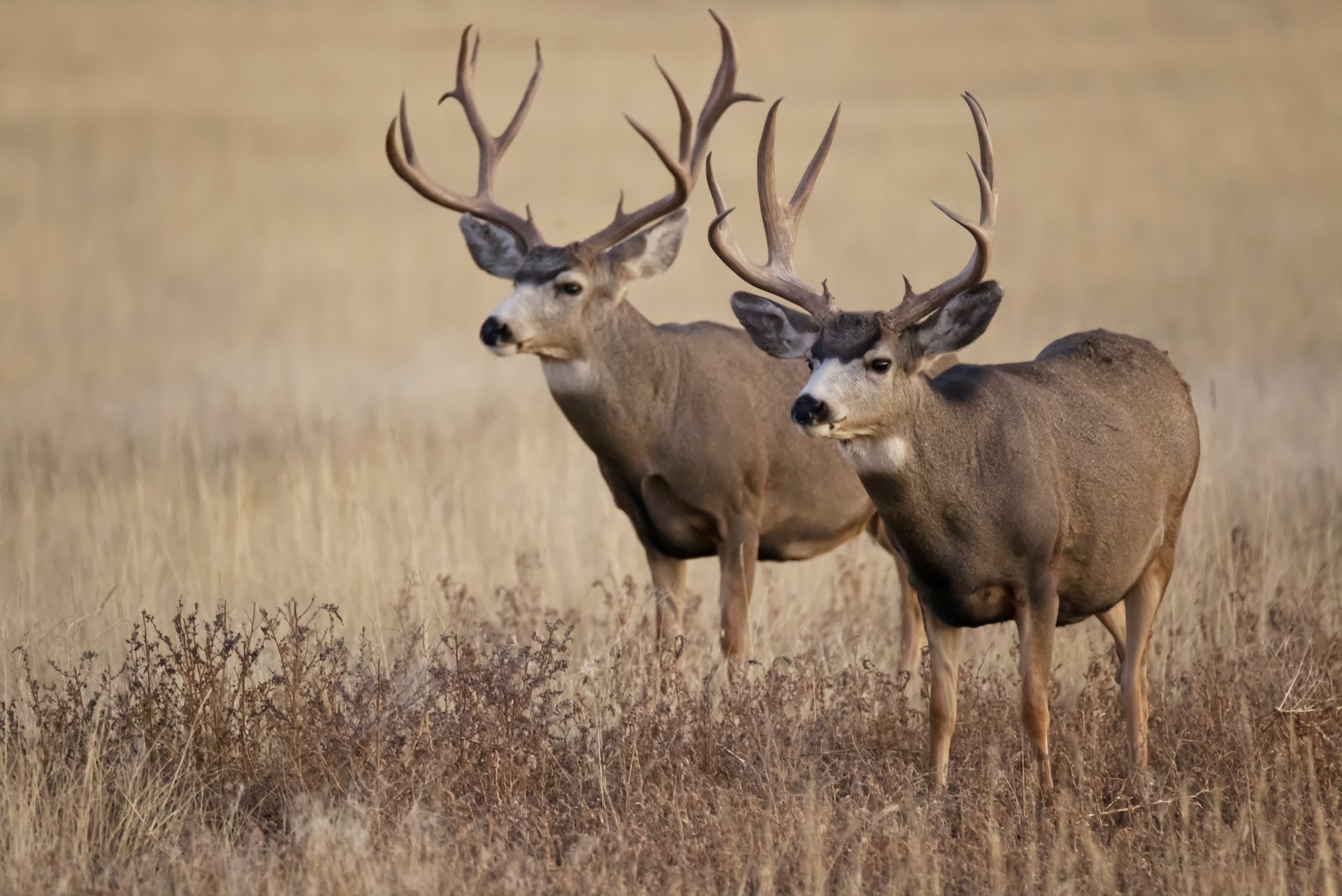
As an Amazon Associate, Modded gets commissions for purchases made through links in this post.
People hunt many animals for food and sport, ranging from squirrels to grizzly bears. The most popular type of game animal by far is the humble deer. Various deer species belonging to the Cervidae family populate six of the seven continents and are the main food sources for billions of people. Which types of deer are the most common?
You can find dozens of types of deer in the United States and Canada, but hunters can only target a handful of species. Here are the seven primary types of deer you should know as hunting seasons get underway across North America.
Whitetail Deer
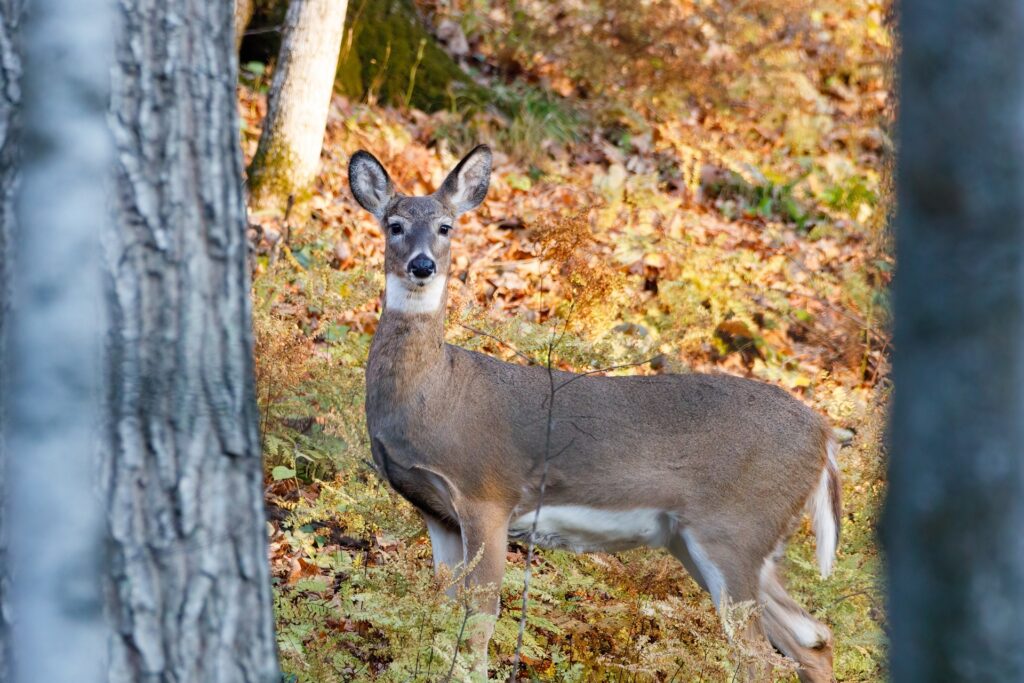
- Scientific Name: Odocoileus virginianus
- Size: 150-pound adult males, 100-pound adult females,
- Lifespan: 6-10 years
- Unique Features: White coloring around the tail and underbelly, white spots on the back during infancy, white coloring around the face during old age, reddish-brown coat during the summer, grayish-brown coats during the winter
- Population: 31.7 million as of 2021
- Habitats: southern Canada, east and midwest United States, Central America, northern South America
The whitetail deer is the most common deer species in North America and the most popular species for hunters because of their population density in wooded areas. They are non-aggressive toward humans even during mating season, so they’re easier prey than most other species. American hunters kill about 6 million whitetail deer every year during legal hunting seasons, which equates to about 200,000 tons of meat.
Mule Deer
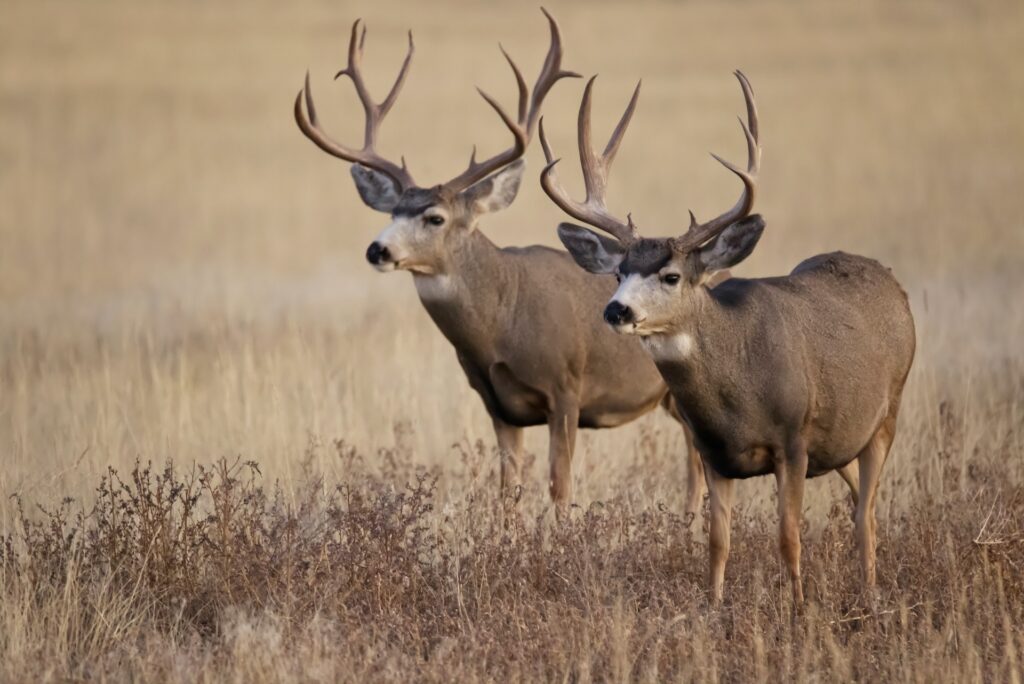
- Scientific Name: Odocoileus hemionus
- Size: 120-330 pound adult males, 90-200 pound adult females
- Lifespan: 9-11 years
- Unique Features: Large mule-like ears, dark coloring around the tail and underbelly, brown coat during the summer and grayish-brown coat during the winter, dark symmetrical antlers
- Population: 4 million as of 2021
- Habitats: Pacific coast from northern California to Alaska, primarily in dry desert climates
The mule deer got its name from its comically large ears that bear resemblance to mules and donkeys. It’s much larger than a whitetail deer, which means it provides more meat and is highly valuable to hunters. Overhunting has caused populations to dwindle in recent decades, which has prompted many states to set tighter restrictions. In most places you’re only allowed to hunt fully mature bucks.
Blacktail Deer
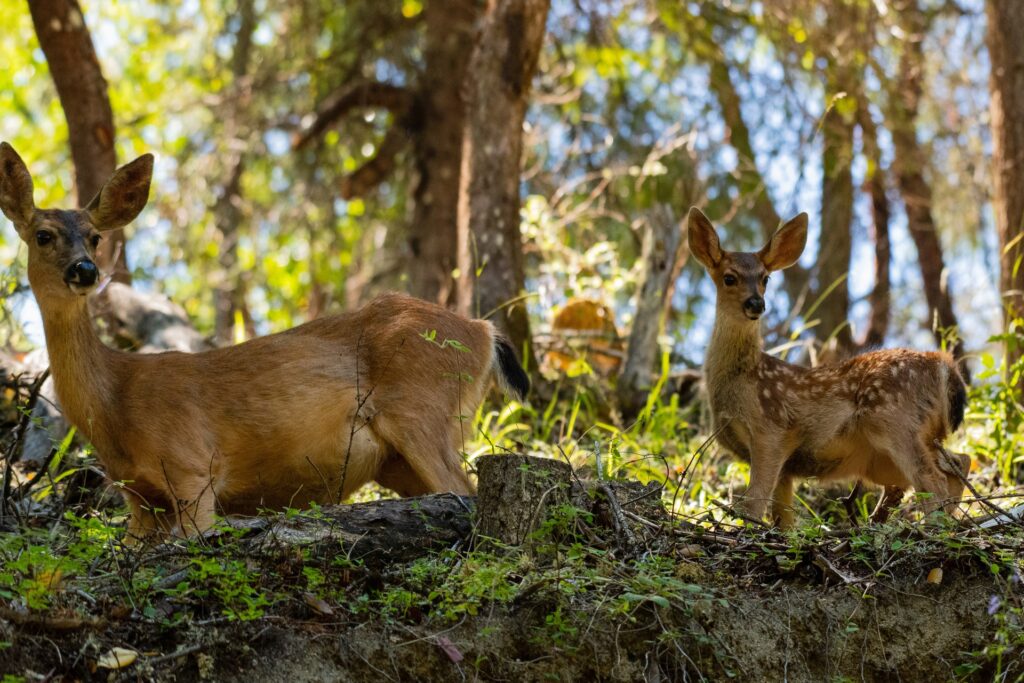
- Scientific Name: Odocoileus hemionus
- Size: 120-pound adult males, 80-pound adult females
- Lifespan: 6-10 years
- Unique Features: Large mule-like ears, black tail, white patch on the hindquarters, brown coat during the summer, grayish-brown coat during the winter, dark symmetrical antlers
- Population: 3.8 million as of 2021
- Habitats: Pacific coast from northern California to Alaska, primarily in mountains or woodlands
The blacktail deer is a slightly smaller subspecies of the mule deer that deserves its own category. They dominate the deer hunting scene in western Canada and the United States, especially around the Sierra Nevada and Cascade mountain ranges. Their coloring acts as effective camouflage in these dark and dreary environments.
Sitka Deer
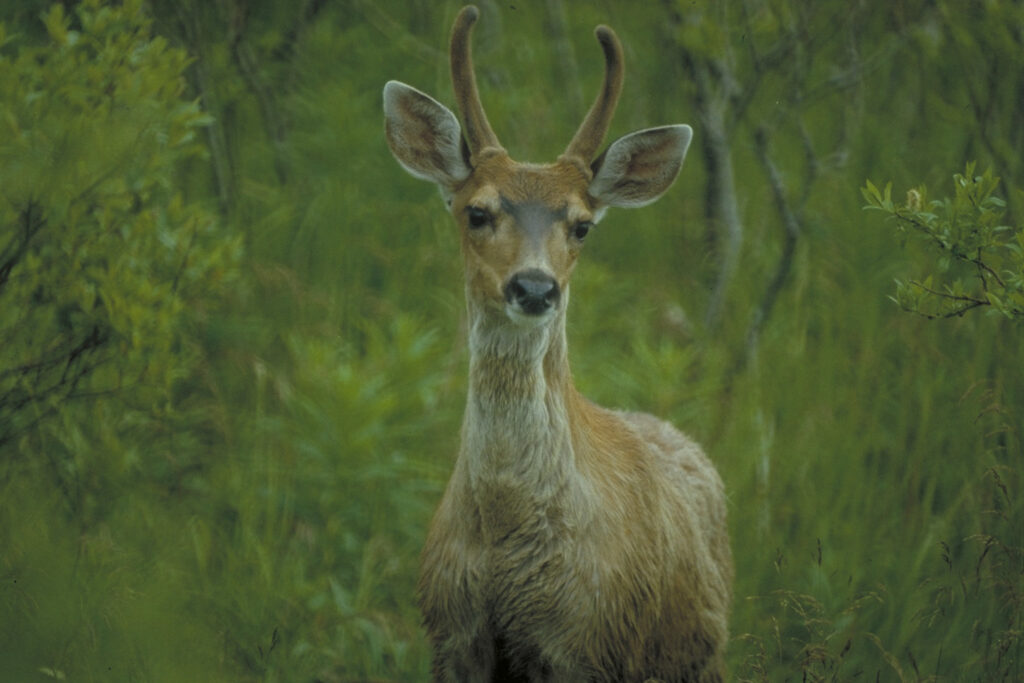
- Scientific Name: Odocoileus hemionus sitkensis
- Size: 100-120 pound adult males, 70-90 pound adult females
- Lifespan: 10-15 years
- Unique Features: small antlers, black tail, reddish-brown coat during the summer, grayish-brown coat during the winter,
- Population: N/A
- Habitats: Pacific coast from British Columbia to Alaska
The Sitka blacktail deer is the smallest and most elusive subspecies of the mule deer, which makes it difficult to estimate the population. They provide a real challenge for experienced hunters, especially given their running and swimming abilities. Most hunters prefer to use compound bows when hunting sitka deer for a more stealthy approach.
Elk
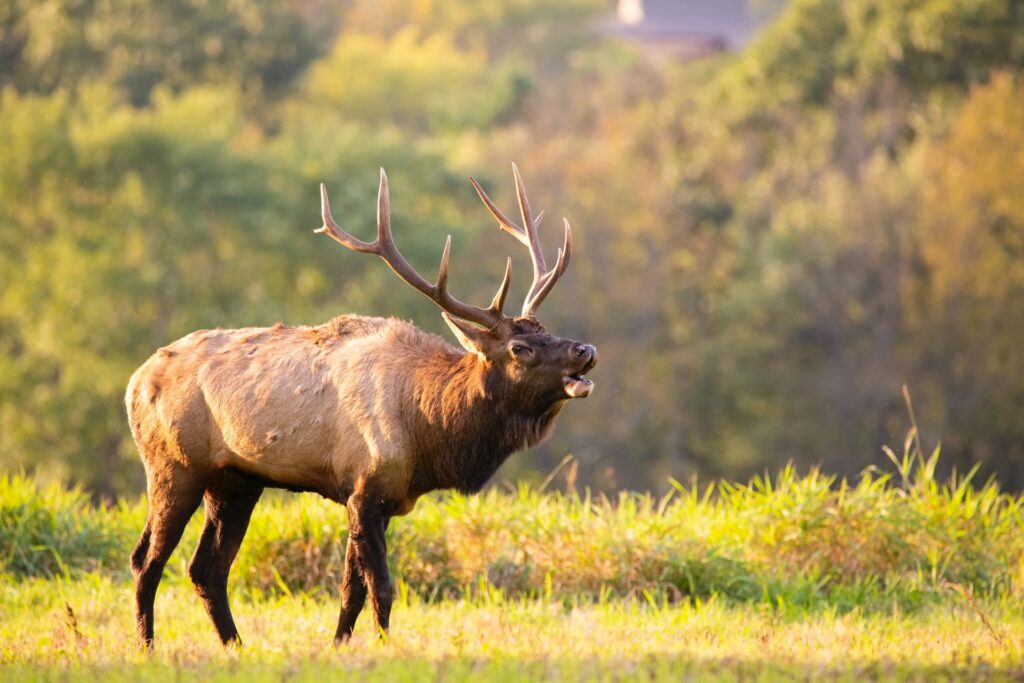
- Scientific Name: Cervus canadensis
- Size: 710-750 pound adult males, 500-530 pound adult females
- Lifespan: 10-13 years
- Unique Features: large rump patch on upper back, large symmetrical antlers, copper brown coat during the summer, light tan coat during the winter
- Population: 1+ million as of 2023
- Habitats: Canada, western United States, central and east Asia
Elk are one of the largest types of deer in the world, making them attractive targets for both meat and sport hunting. American settlers nearly hunted this deer species to extinction in the 1800s, but conservation efforts have restored the numbers to more than 1 million. Elk prefer to stay in the same place, which has caused several distinct subspecies to develop in different regions of Asia and North America.
Moose
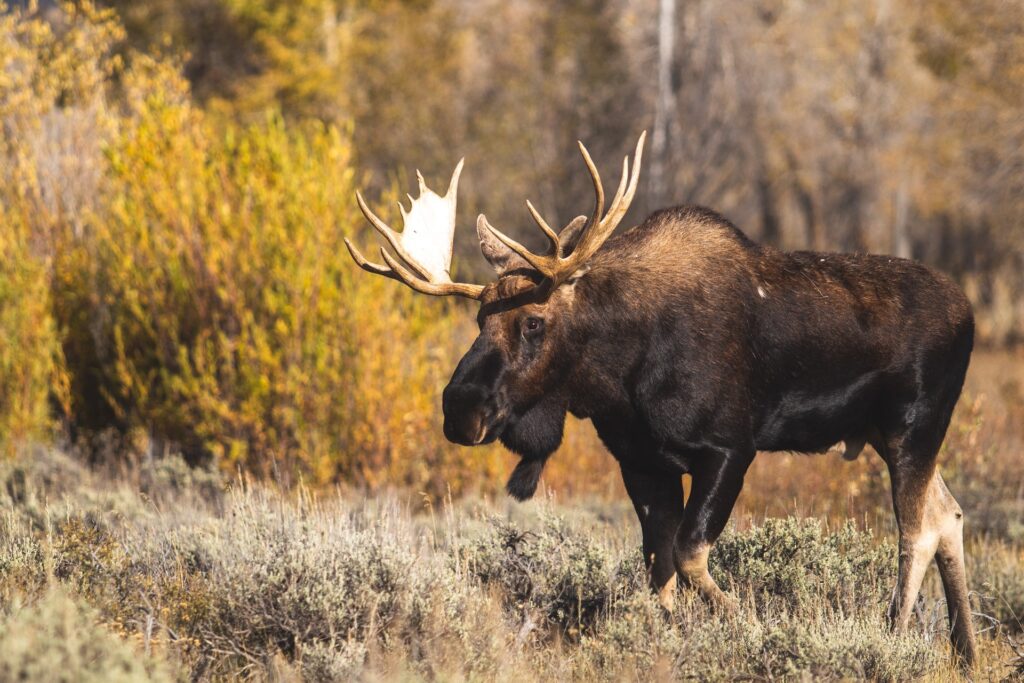
- Scientific Name: Alces alces
- Size: 850-1,500 pound adult males, 450-1,000 pound adult females
- Lifespan: 15-25 years
- Unique Features: large horse-like head with jowls, wide antlers, hump on upper back, thick dark brown coat year-round
- Population: 1.5 million as of 2023
- Habitats: Canada, northern United States
The moose is the largest and most unique type of deer in many ways. Unlike other deer species, it prefers solitude over living in a herd. It’s also notoriously aggressive toward humans and will attack without provocation. Hunters love the moose for its unmatched meat supply and thick hide, but they must be more cautious when hunting these unpredictable animals.
Reindeer
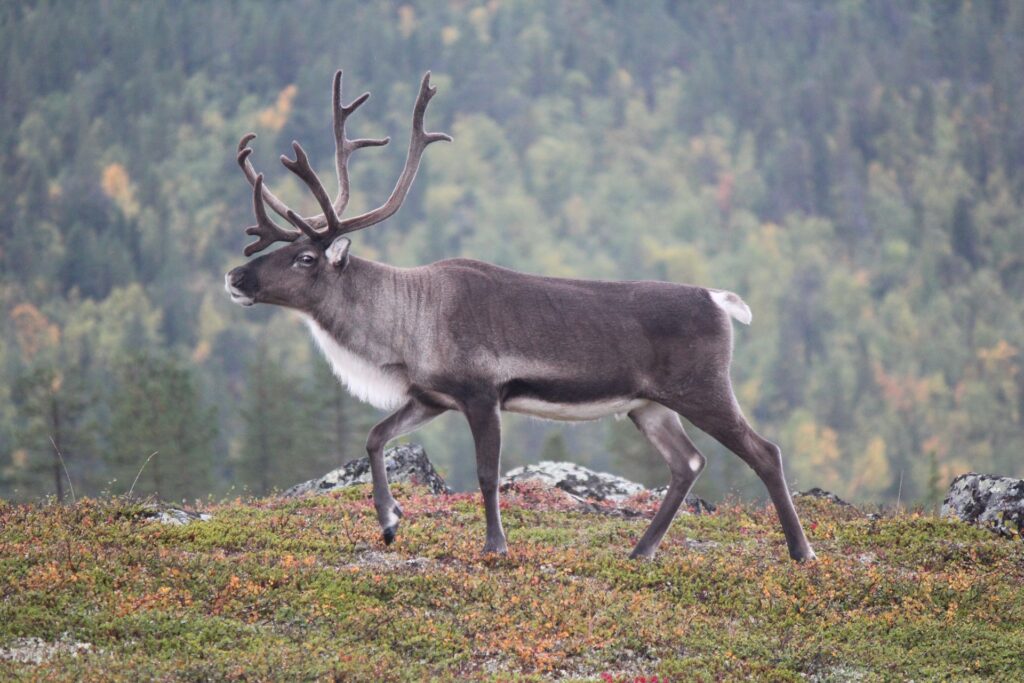
- Scientific Name: Rangifer tarandus
- Size: 350-400 pound adult males, 180-260 pound adult females
- Lifespan: 15-18 years
- Unique Features: large fuzzy antlers, wide muzzle, broad hooves and thick brown fur with gray accents
- Population: 8 million as of 2023
- Habitats: Canada, Alaska, northern Europe and Asia
The reindeer — also known as caribou — is the most herd-oriented deer species. Herds can reach up to 10,000 reindeer that cover vast frozen landscapes. Their grazing lifestyles make them easy to hunt, but you don’t want to get caught in a stampede. Hunters tend to keep their distance and pick off large bulls with the thickest fur, which is crucial for survival in cold climates.
Hunt These Deer Species Responsibly
You can choose to hunt all seven types of deer on this list, but you must hunt them responsibly. Research your local hunting laws, get some tags, go with a friend, and most importantly, respect the animals. They provide the invaluable gift of fresh food, and you should never take their sacrifice for granted.
Stay up to date with the latest by subscribing to Modded Minute.
Author
Jack Shaw is a senior writer at Modded. Jack is an avid enthusiast for keeping up with personal health and enjoying nature. He has over five years of experience writing in the men's lifestyle niche, and has written extensively on topics of fitness, exploring the outdoors and men's interests. His writings have been featured in SportsEd TV, Love Inc., and Offroad Xtreme among many more publications.

